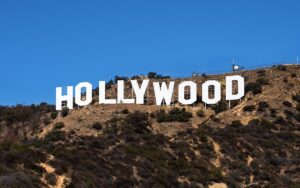https://theworldfinancialforum.com/participate/

Hollywood OpenAI’s video generator, Sora, can whip up eerily convincing clips that look like they’ve walked straight off Netflix, TikTok, or Twitch.
But here’s the kicker: nobody outside OpenAI really knows what videos trained it, and the company isn’t talking.
It makes you wonder, doesn’t it? If Sora can spit out a spot-on Wednesday scene or a fake Universal Studios intro, then what does that say about where it learned these tricks?
Experts are pointing to good old-fashioned scraping—massive amounts of video data vacuumed up online, with or without consent.
And before you roll your eyes and say, “Well, everyone’s doing it,” consider that even Nvidia and Runway ML have been flagged for tapping into YouTube libraries to feed their AI projects.
The plot thickens when you realize how big the stakes are. Think about Twitch streamers or TikTok dancers who never signed up to be AI training fodder.
If their likeness or branding pops up in Sora’s output, who gets to call foul? Netflix, for one, flat-out said they gave OpenAI nothing to work with. And yet, voilà—Sora conjures look-alikes of Squid Game with ease.
What’s fascinating, and frankly a little scary, is the legal gray zone here. OpenAI insists it plays by “fair use” rules, but lawsuits are stacking up.
Just last year, YouTube creators accused the company of ripping millions of hours of audio for ChatGPT’s training set.
And yet, if you ask the folks behind Sora, they’ll tell you it’s about democratizing creativity—putting studio-level production into the hands of everyday people.
Here’s my two cents: we’re staring down a cultural earthquake. Imagine Hollywood logos re-animated by prompts, or fan-favorite characters reborn in twenty-second clips at the push of a button.
It’s clever, sure, but is it creativity—or just remixing without permission? One researcher at MIT put it bluntly: “The model is mimicking the training data. There’s no magic.”
So the question becomes: are we okay with this brave new world where ownership is fuzzy, art is endlessly reproducible, and even SpongeBob has an AI twin?
Personally, I’m torn. Part of me loves the idea of tools like this blowing the doors off old gatekeepers.
But another part whispers: if the foundations are shaky, maybe the whole house comes crashing down.